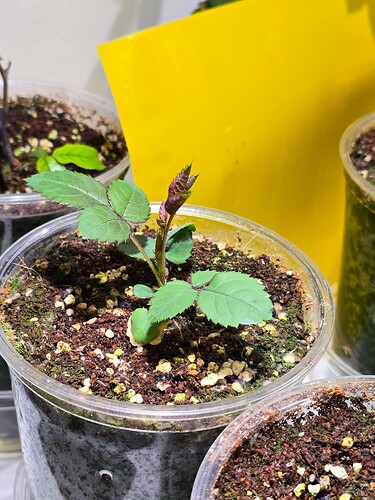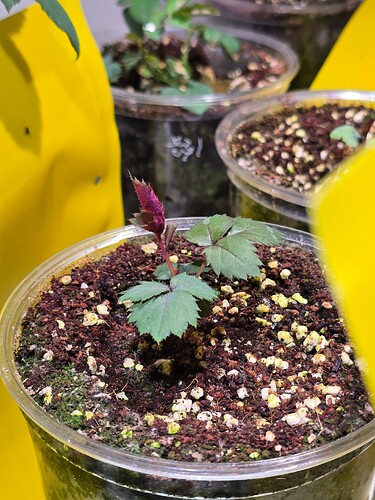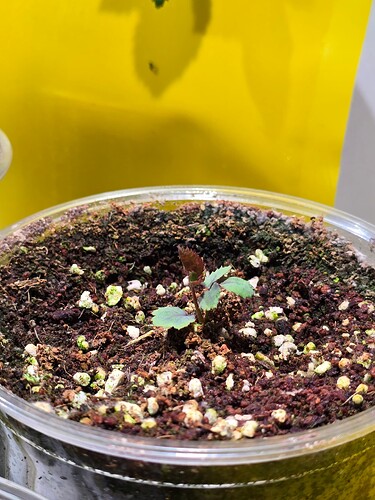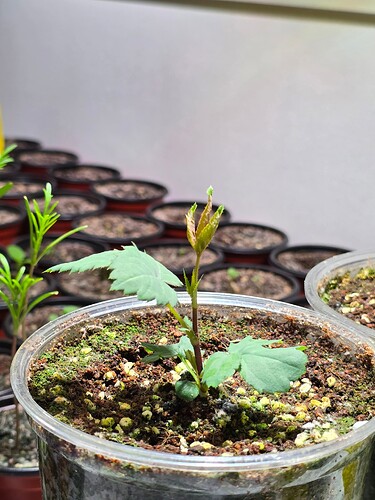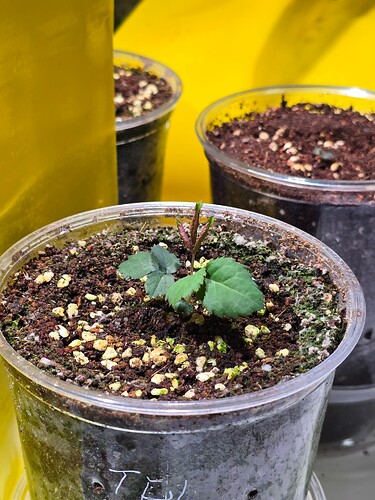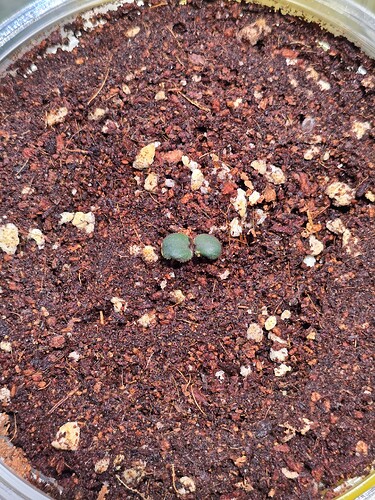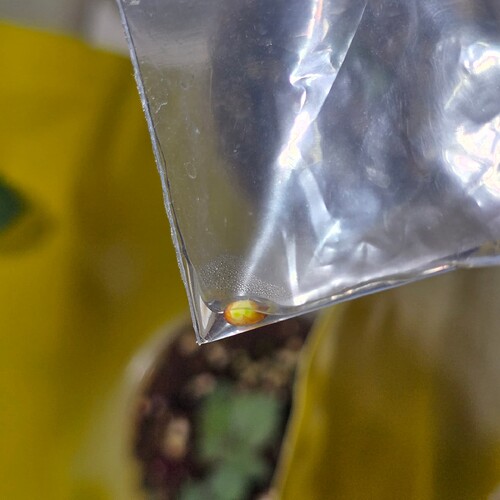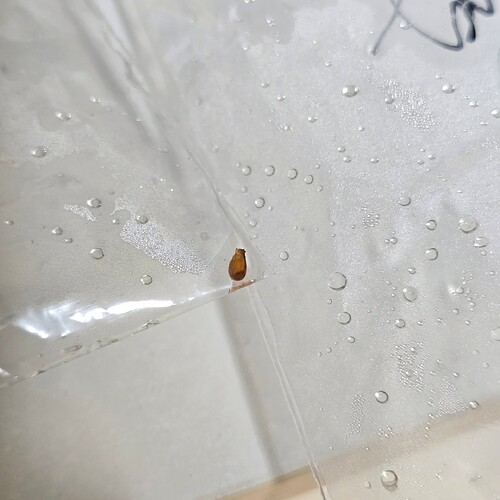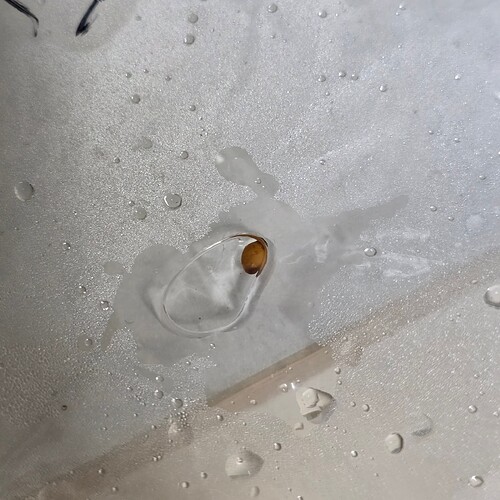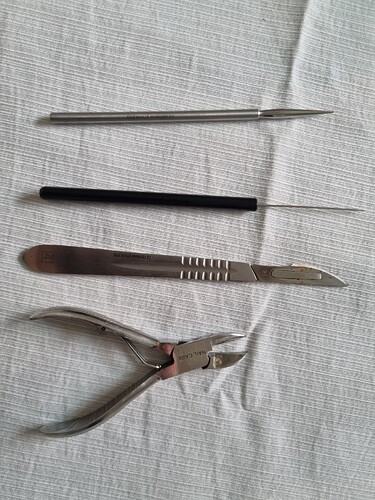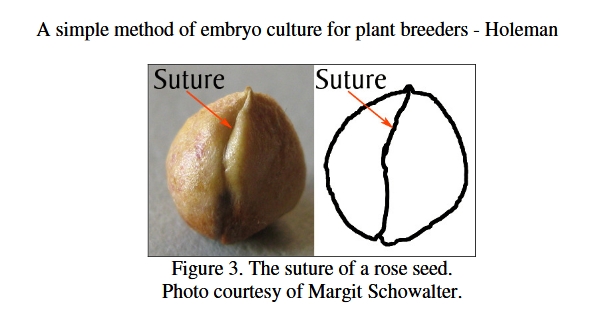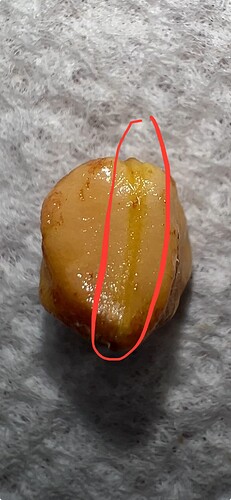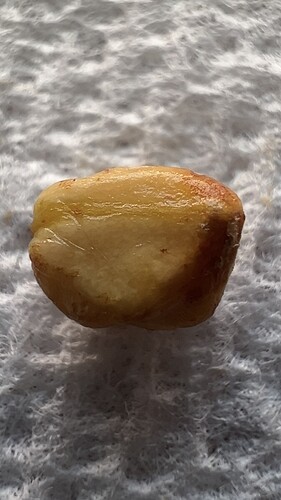I’m glad you’ve got a new place to resume the work you love. Baby steps are still steps! Doing “Your Best” is a bell-curve, so don’t do yourself worse by pushing too hard. I hope your revised plans with those saved hips yield joyful results. Keep us posted!
I’m wishing you success with all your new endeavors. ![]()
I extracted embryos from seeds of 3 different rosehips 4 days ago, and these embryos from one rosehip started to germinate very fast. I planted 2 of them in container today. this time I soaked potting soil with cyantraniliprole to prevent fungus gnat fly. I hope they survive.
I put them under horticultural lamp 10 hours a day and the Lux was about to 10k.
and I also washed embryos with a few drops of fresh tap water and drained it once every two days.
Follow up update:
I extracted 10 embryos totall last time.
1/10 of extracted embryos turned green, but it seemed damaged when i extracted it. after the testa swelled the embryo got disassembled itself.
↑5/10 of extracted embryos started to develop root without removing testa in 7 days.
I removed testa when I plant them on pot.
here are photo of 5 seedlings now up there.
↑4/10 of embryos remained very still even after weeks. so I scratched testa of two embryos with sharp pincet, and those scratched embryos started to turn green and swell after a week.
what you see up there is photo of those 2 embryos I scratched(one already planted and one swelling).
↑2 embryos I didn’t scratch remain still yet.
I have had the supreme luck of getting a singular stanwell perpetual seed this year. I am very aware these are as rare as hens teeth & unlikely to germinate without embryo culture. In the past the testa was my enemy… hopefully with your posts to help me I can avoid dealing with it!
When you say cut through, is that with the nail clippers or is the outside then soft enough to use a sharp blade?
Hi
I use cuticle clippers to cut through the hard parts. I try to apply them in a way so that it sort of pries the seed open. Some clipping, scraping and cutting in a good lighting and under a magnifying glass is often necessary before the prying may happen (also to figure out where the suture lies and how to apply the clippers). I attach a picture of the tools I use for this.
When I start extracting seeds too early and the ring fibres are still prominent, I start loosing embryos. I have not been very successful in cutting through those. It is possible though and I guess its a question about practice and building up skills.
Hjörtur
@James_D to crack open the pericarp, I use the bottom tool labeled “Nail Care”. It was a game changer for me after trying nail clippers. Use it to cut along the suture and it usually can be pulled apart into the two halves
After I separate the testa from the pericarp, I use a utility knife replacement blade to cut a slit in the testa along one side and the top. Use the tip of the blade to hold the slit open then I “roll” the embryo away from the slit. It rips the testa and usually the embryo just pops out
I have yet to lose a single embryo during testa removal since I started this method. I mainly lose them at the pericarp stage from crushing
Will look into getting those particular nail clippings
Can you clarify what you mean by the suture/show me please? ![]()
![]()
Hello James_D, below you will find a nice grafic. It is taken from Donald J. Holeman’s publication (first edition 2009), Simple Embryo Culture for Plant Breeders.
The seeds I’ve performed embryo extraction on have sutures that are not so obvious as the photo Don shows. But here is a good example. Generally looks like a line where the two halves meet.
I will use the clippers to cut along this line. Starting from the flat end and working my way down either side toward the pointed end. I do not cut across the pointed end to avoid damaging the radicle.
Thank you very much, I will continue practicing… hopefully being successful on the rare seeds

